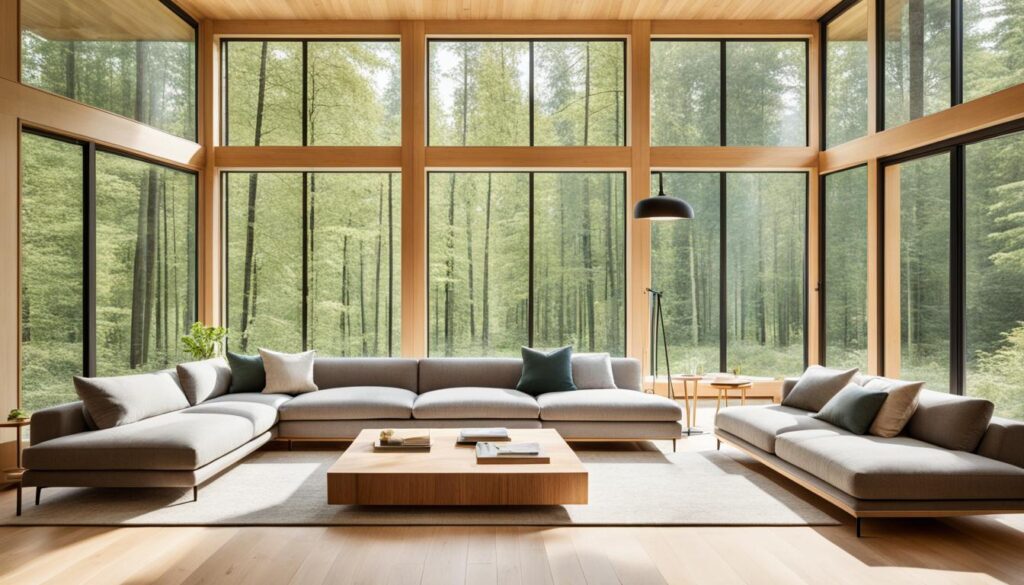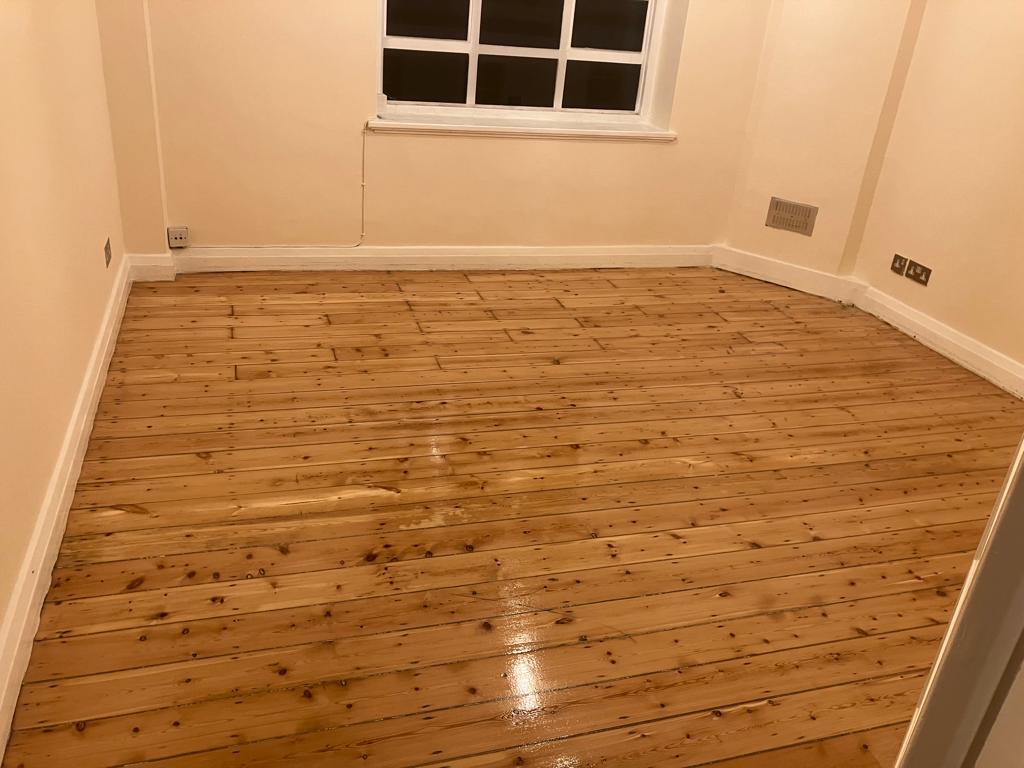Sustainable interior design is a movement towards creating spaces that are not only aesthetically pleasing but also environmentally responsible. It involves using eco-friendly materials, promoting energy efficiency, and considering the lifecycle of each piece. Sustainable interior design principles include resource efficiency, energy efficiency, water conservation, and indoor environmental quality. Embracing sustainable interior design offers benefits such as reducing waste, conserving resources, creating healthier living environments, and saving money in the long run. Current trends in sustainable interior design focus on embracing eco-friendly materials, incorporating minimalist or maximalist design styles, and integrating technology for sustainability.
Key Takeaways
- Sustainable interior design prioritizes eco-friendly materials and energy efficiency.
- Embracing sustainable interior design reduces waste and conserves resources.
- Current trends in sustainable interior design include using eco-friendly materials and integrating technology for sustainability.
- Sustainable interior design creates spaces that are both stylish and environmentally responsible.
Introduction to Sustainable Interior Design
Sustainable interior design is a concept that focuses on creating aesthetically pleasing spaces while being mindful of the planet. It emphasizes the use of eco-friendly materials, energy efficiency, and minimal environmental impact. The goal is to minimize ecological harm and enhance the well-being of occupants. Sustainable interior design is guided by four principles: resource efficiency, energy efficiency, water conservation, and indoor environmental quality.
By embracing sustainable interior design, we can enjoy numerous benefits. First and foremost, it helps reduce pollution and preserve natural resources. By choosing environmentally friendly materials and adopting energy-efficient practices, we can contribute to a healthier living environment. Additionally, sustainable interior design can also lead to long-term cost savings. Energy-efficient features, such as LED lighting and well-insulated spaces, can result in lower utility bills over time.
“Sustainable interior design is a powerful tool that enables us to create beautiful spaces that align with our environmental values.”
Let’s take a closer look at the principles of sustainable interior design:
- Resource efficiency: This principle focuses on minimizing waste and utilizing materials that have a lower environmental impact. It involves choosing renewable and recyclable materials, such as bamboo or reclaimed wood, and employing strategies to reduce construction and demolition waste.
- Energy efficiency: Sustainable interior design aims to reduce energy consumption and maximize energy efficiency. This can be achieved through proper insulation, the use of energy-efficient appliances and fixtures, and harnessing renewable energy sources. By optimizing energy use, we not only reduce our carbon footprint but also lower our energy bills.
- Water conservation: Water is a precious resource, and sustainable interior design seeks to minimize water usage and promote conservation. This can be accomplished by installing low-flow fixtures, implementing rainwater harvesting systems, and adopting water-efficient landscaping practices.
- Indoor environmental quality: Sustainable interior design prioritizes creating spaces that enhance the well-being and comfort of occupants. It involves ensuring good indoor air quality by using low-emission materials, adequate ventilation, and natural lighting. Additionally, incorporating biophilic design elements can help connect individuals with nature, improving their mental and physical health.
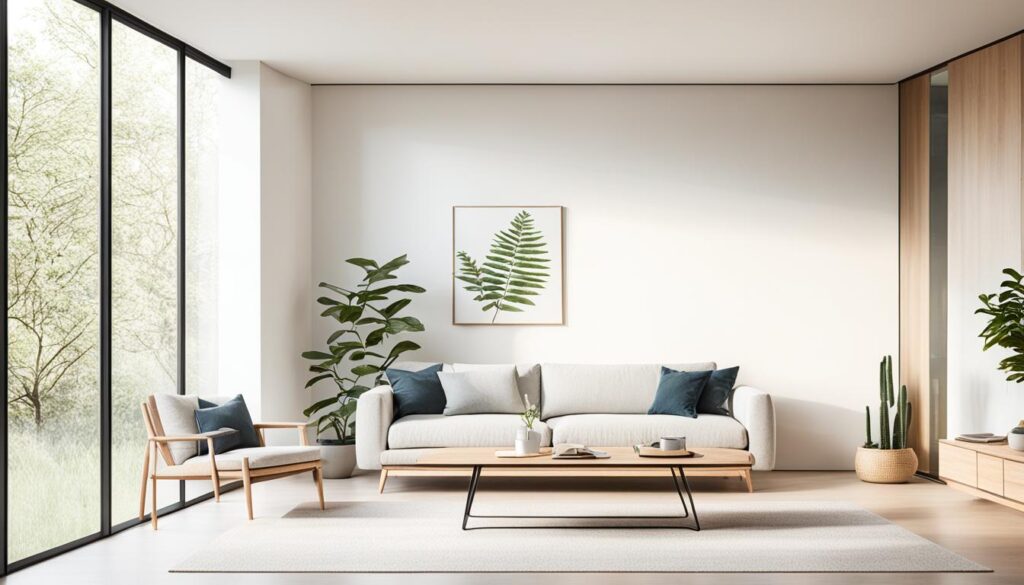
By embracing sustainable interior design principles, we can take significant steps towards creating spaces that are environmentally responsible, visually appealing, and conducive to well-being. The next section will explore the current trends in sustainable interior design, including the use of eco-friendly materials, minimalist and maximalist design styles, and the integration of technology for sustainability.
Current Trends in Sustainable Interior Design
As the world becomes increasingly eco-conscious, sustainable interior design is gaining popularity. Let’s explore the current trends that are shaping the future of green design.
Eco-Friendly Materials in Interior Design
Eco-friendly materials are at the forefront of sustainable interior design. Materials like bamboo, reclaimed wood, and recycled metal are being embraced for their low environmental impact. These materials not only add a unique touch to interior spaces but also contribute to a greener planet.
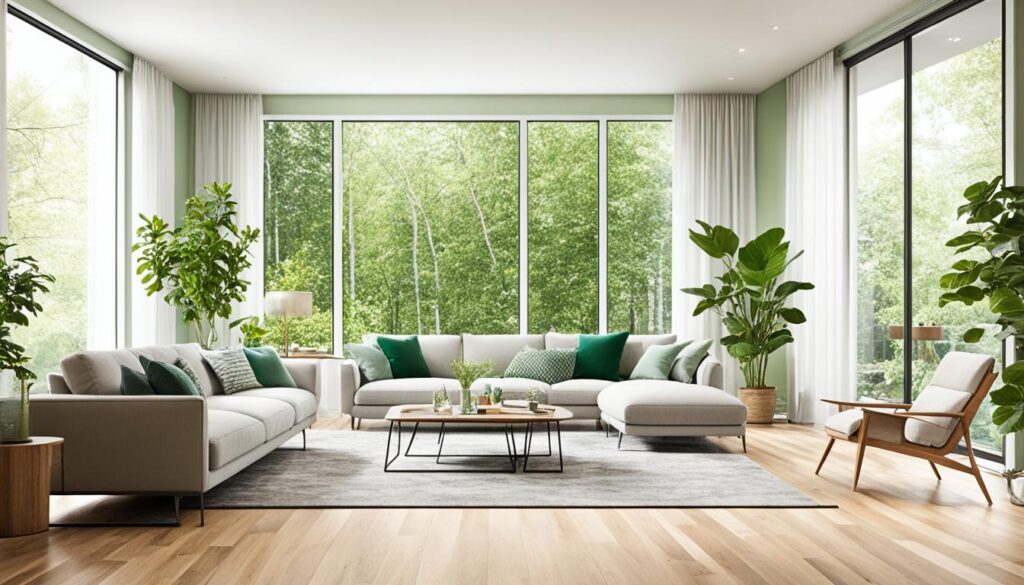
Minimalist vs Maximalist Sustainable Design
There is a growing interest in both minimalist and maximalist sustainable design styles. Minimalism emphasizes simplicity, clean lines, and a “less is more” philosophy. On the other hand, maximalism embraces bold patterns, vibrant colors, and a more eclectic approach. Whichever style you choose, sustainable design principles can still be applied to create a harmonious and eco-friendly space.
Technology Integration for Sustainability
Integrating technology into interior design is a key trend for enhancing sustainability. Energy management systems, sustainable lighting fixtures, and eco-friendly appliances are revolutionizing the way we live. By incorporating these technologies, you can reduce energy consumption, minimize waste, and create a more sustainable home.
Eco-Friendly Materials and Products
There is a growing emphasis on using innovative materials and products that are not only sustainable but also environmentally friendly. From non-toxic paints to recyclable furniture, eco-conscious designers are exploring new ways to minimize environmental impact. By choosing these products, you can make a positive difference in your interior spaces.
By following the current trends in sustainable interior design, you can create beautiful spaces that are not only aesthetically pleasing but also environmentally responsible. Embrace eco-friendly materials, explore minimalist or maximalist styles, integrate technology for sustainability, and choose products that have a minimal environmental impact.
Designing for Energy Efficiency
When it comes to interior design, incorporating energy-efficient practices not only benefits the environment but can also lead to cost savings and a more sustainable home. There are several strategies to consider when designing for energy efficiency, including natural lighting strategies, the use of energy-efficient appliances and fixtures, smart home technologies for sustainability, and water conservation techniques.
Natural Lighting Strategies
Maximizing the use of natural light is a key aspect of energy-efficient design. By strategically incorporating skylights and properly placing windows, you can reduce the need for artificial lighting during the day. Natural light not only reduces energy consumption but also creates a warm and inviting ambiance in your home.
Energy-Efficient Appliances and Fixtures
Choosing energy-efficient appliances and fixtures is another important consideration. Look for appliances with the Energy Star label, as they are designed to consume less energy without compromising on performance. LED lighting is also a great choice, as it uses significantly less electricity compared to traditional incandescent bulbs.
Smart Home Technologies for Sustainability
Incorporating smart home technologies can further optimize energy consumption. Programmable thermostats allow you to schedule temperature adjustments based on your daily routine, minimizing energy waste. Sustainable lighting systems, such as motion sensor lights or dimmable LED bulbs, provide flexibility and ensure that lights are only used when needed.
Water Conservation Techniques
Water conservation is an essential aspect of sustainable interior design. Low-flow fixtures, such as faucets, showerheads, and toilets, help reduce water usage without sacrificing functionality. By implementing these techniques, you can significantly minimize water waste and contribute to a more eco-friendly home.
By incorporating these design strategies, you can create an energy-efficient and environmentally-friendly home that promotes sustainability and reduces your carbon footprint.
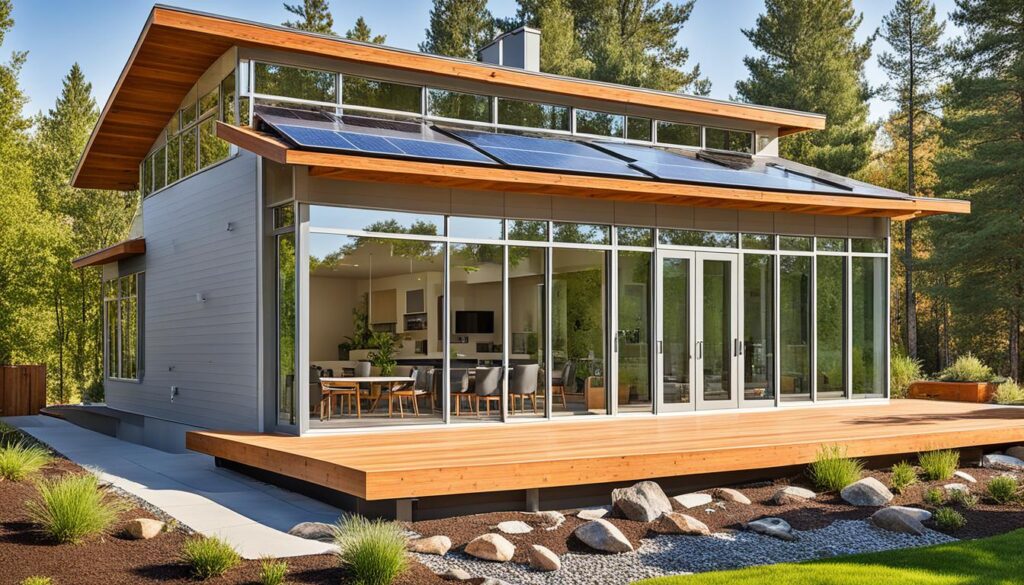
Importance of Sustainable Materials in Interior Design
The importance of using sustainable materials in interior design cannot be overstated. Not only do sustainable materials help minimize the ecological footprint, but they also contribute to creating a healthier living environment. By opting for sustainable materials, designers and homeowners can make a positive impact on both the planet and their own well-being.
There are several examples of sustainable materials that can be incorporated into interior design projects. Some of these materials include:
- Bamboo: Known for its fast growth and renewable nature, bamboo is an excellent choice for sustainable interior design. It can be used for flooring, furniture, and decorative elements.
- Rattan: Rattan is a durable and natural material that can be used for furniture, lighting, and decorative accents. It adds a touch of organic elegance to any space.
- Terrazzo: Terrazzo is a composite material made from recycled glass, stone, or other materials. It can be used for countertops, flooring, and wall cladding, adding a unique and sustainable touch to interior spaces.
- Reclaimed Wood: Using reclaimed wood from old buildings, barns, or discarded furniture not only reduces waste but also adds character and warmth to interior design projects.
- Glass: Glass is a sustainable material that can be recycled and repurposed. It is versatile and can be used for windows, partitions, and decorative features.
- Natural Stone: Natural stone, such as marble, granite, or slate, is a sustainable choice for countertops, flooring, and wall finishes. It is durable and adds a touch of timeless beauty to interior spaces.
These sustainable materials have a low carbon footprint, promote resource conservation, and can often be recycled or repurposed. By incorporating them into interior design projects, designers and homeowners not only contribute to a greener future but also create visually appealing and environmentally friendly spaces.
“The use of sustainable materials in interior design is a powerful way to create spaces that are not only aesthetically pleasing but also environmentally responsible.” – Rosie Allen, Interior Designer
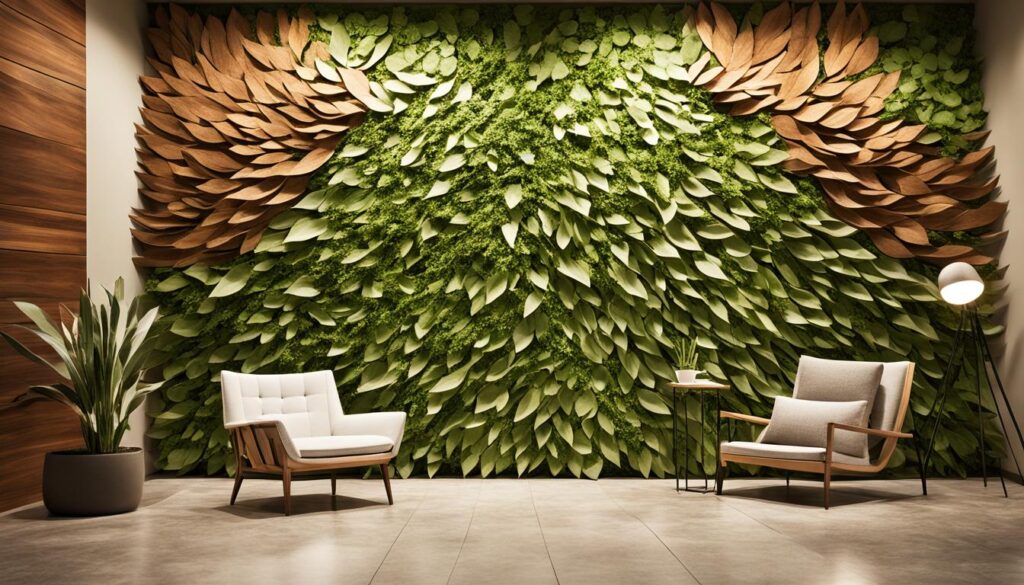
| Benefits | Explanation |
|---|---|
| Environmental Impact | Sustainable materials contribute to reducing waste, promoting resource conservation, and minimizing carbon emissions. |
| Health and Well-being | Sustainable materials often have low VOC emissions, improving indoor air quality and creating healthier living environments. |
| Economic Savings | Using sustainable materials can lead to long-term cost savings through energy efficiency and durability. |
| Aesthetic Appeal | Sustainable materials add warmth, texture, and elegance to interior spaces, enhancing their visual appeal. |
| Longevity | Sustainable materials are often more durable and resilient, ensuring the longevity of interior design elements. |
The Future of Sustainable Interior Design
Sustainability is increasingly becoming a priority in interior design as the world recognises the need for more environmentally friendly practices. The future of sustainable interior design lies in further integrating sustainable materials and design principles, as well as promoting a global awareness of the environmental and psychological impacts of design choices. Sustainable design has the potential to create spaces that are not only aesthetically pleasing but also promote well-being and harmony with the environment.
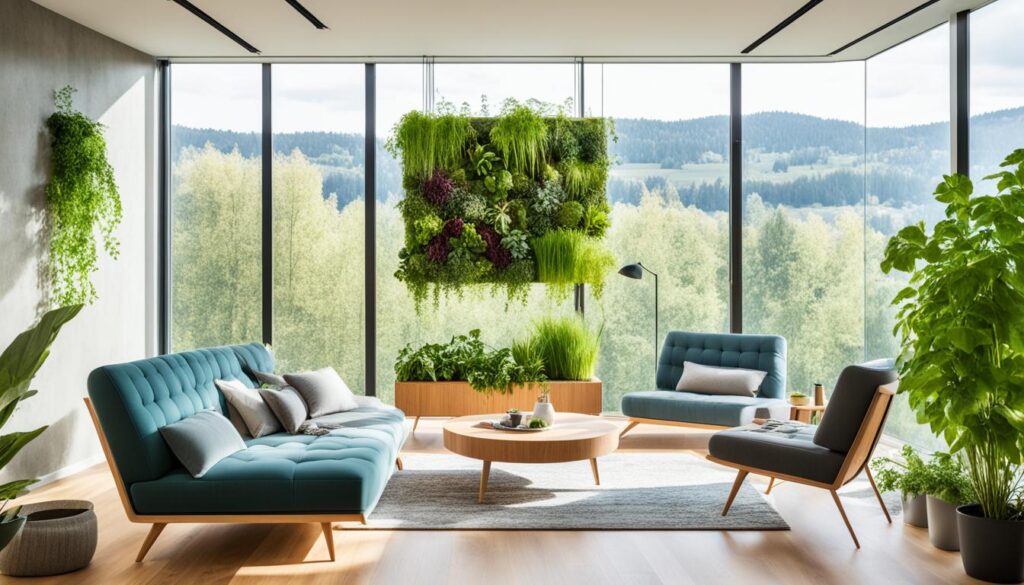
As the world faces increasing environmental challenges, the impact of interior design on the planet cannot be ignored. By embracing sustainable interior design, we can reduce carbon emissions, conserve resources, and minimize waste. This global environmental impact is crucial for the long-term health of our planet.
However, sustainable interior design goes beyond just the environmental aspect. It also has a psychological impact on the occupants of a space. By creating environments that are harmonious with nature and free from harmful toxins, sustainable design promotes healthier and happier living conditions. Studies have shown that exposure to natural elements and eco-friendly materials can reduce stress, improve productivity, and enhance overall well-being.
Looking ahead, the future of sustainable interior design holds great potential. Architects, designers, and manufacturers are continuously innovating and exploring new ways to create sustainable spaces. From the development of new materials made from renewable resources to the integration of smart technologies that optimize energy efficiency, the possibilities are endless.
Education and awareness about sustainable design are also key to its future success. By promoting a global understanding and appreciation of sustainable practices, we can drive change on a larger scale. This includes advocating for sustainable design standards, supporting eco-conscious brands, and making environmentally responsible choices as consumers.
In conclusion, the future of sustainable interior design is promising. By integrating sustainable materials, promoting global environmental awareness, and recognizing the psychological impact of design choices, we can create spaces that are not only beautiful but also contribute to a sustainable and harmonious future.
Conclusion
Sustainable interior design is a forward-thinking approach that prioritizes eco-friendly materials, energy efficiency, and minimal environmental impact. By embracing sustainable interior design, we have the power to reduce waste, conserve resources, and create healthier living environments for ourselves and future generations. This not only benefits the planet but also saves us money in the long run.
In today’s design landscape, there is a growing emphasis on incorporating eco-friendly materials into our spaces. From bamboo and reclaimed wood to recycled metal and glass, these sustainable materials add warmth, texture, and elegance to interior design. The choice between minimalist or maximalist styles allows for both simplicity and bold self-expression, all while adhering to sustainable principles.
Looking ahead, the future of sustainable interior design lies in further integrating sustainable materials and design principles. It is essential to raise global awareness about the environmental and psychological impacts of our design choices. By making conscious decisions and embracing sustainable practices, we can create stylish and environmentally responsible spaces that promote well-being and harmony with our natural surroundings.
